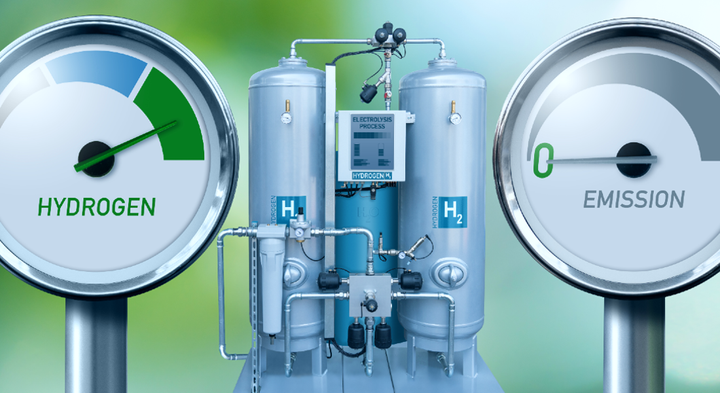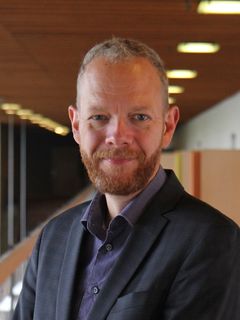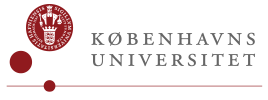Major EU grant will make metal alloys the catalysts of the future
New international research collaboration to trailblaze the next generation of catalysts – a prerequisite for the renewable chemicals and fuels of the future. The researchers hope to accomplish this with a new data-driven approach to studying catalysts and their materials. The collaboration, which includes the University of Copenhagen, has just received an ERC grant of €10 million to realise its ambitions.

The renewable fuels of the future depend on them, but they are already used to make everything from creams, rain jackets, cleaning products and gasoline. Catalysts speed up chemical reactions and the way chemicals interact with other compounds. Presently, intensive research is being conducted to find new and better catalysts that can also be used for the green transition.
In a new Synergy Grant, Jan Rossmeisl from the Department of Chemistry at the University of Copenhagen, together with researchers Matthias Arenz from the University of Bern, Alfred Ludwig from the University of Karlsruhe Bochum and Karl Mayrhofer of the Friedrich-Alexander-Universität Erlangen-Nürnberg have received €10 million from the European Research Council (ERC).
The grant will be used to study whether it is possible to develop more efficient, long-lasting and sustainable catalysts by investigating so-called high-entropy materials (HEM) – i.e., materials that consist of composite metals or alloys, as opposed to the materials upon which conventional catalysts are based, which typically consist of just one chemical element.
"We will search for basic knowledge about the materials that can be used for catalysts, and about their stability. Thereafter, we hope that this knowledge can make it possible to develop more effective and durable materials for electrocatalysis. Should we succeed, it could pave the way for a new generation of catalysts," says Jan Rossmeisl.
Among other things, electrocatalysis is the prerequisite for Power-to-X, which has been designated to play a key role in the EU's green transition plans. Here, hydrogen is split from water using electricity, which allows energy to be stored as green fuel.
"It can be explained simply. With a catalyst that is twice as efficient, we only need half as many wind turbines to produce the same amount of renewable fuel, and the efficiency of electrocatalysis depends on what the catalyst is made of," states Jan Rossmeisl.
Current materials are rare and expensive
The processes at work within a Power-to-X plant occur in an extreme environment where nearly all material degrades very quickly. It simply rusts. This restricts the possibilities for which materials can be used. Hence, today’s electrocatalysts often consist of rare and expensive materials.
One of these, iridium, is one of the rarest elements on Earth. Because very little of it is mined, the metal is expensive and the prospects of it being used on a large scale are poor.
"If we can develop new knowledge and methods that allow for the design of substitutes that are mixtures of many chemical elements, with perhaps only a bit of iridium, and which are just as or more effective and durable, it would be better and more sustainable," says Jan Rossmeisl.
Unimaginable potential
Each of the four researchers will contribute with their own core competencies in a wide range of scientific disciplines. In a data-based approach, they will combine theoretical modelling and simulations, extensive parallel experiments, the chemical development of nanoparticles and machine learning.
By altering between theory, statistical calculations and practical experiments, the group will work towards various mixing ratios of the metals.
"In Germany, we have the opportunity to perform many experiments quickly and test a wide variety of compositions for their catalytic ability and durability. We can use the results to make adjustments before finally trying to develop realistic proposals for the actual components," explains Jan Rossmeisl.
However, the main goal of the research is to translate knowledge generated by the studies into valuable basic research, which will result in a theory of stability – i.e., an understanding of the durability of catalyst materials and how to improve them.
"We don’t really know much about this today, so we also hope to contribute to the basic understanding of what makes materials more stable," says Jan Rossmeisl, who adds:
"Basic research in new materials can change our world in unimaginable ways. Iron opened up a world of possibilities that Stone Age humans could not dream of, as did the materials in lithium-ion batteries relatively few years ago. It is difficult to predict what new materials could lead to," he says."
*
Project objectives
The new research collaboration aims to gain knowledge about and ultimately develop a new class of catalyst materials that are:
• As effective or better at promoting the chemical conversion of electricity into chemicals.
• Have a higher metastability, which means that the material takes longer to rust while maintaining its efficiency.
They also hope to develop the selectivity of HEM materials – i.e., that the chemical process becomes purer so that no unwanted chemical by-products are created. Furthermore, the goal is to achieve the above using more sustainable, cheaper and accessible materials. Finally, the researchers hope to contribute important basic research regarding materials and catalyst stability, among other things.
The researchers behind the project:
The four professors behind the project are:
Professor Alfred Ludwig from the Ruhr University Bochum, Germany
Professor Karl Mayrhofer of the Helmholtz Institute and Friedrich Alexander University, Erlangen-Nuremberg, Germany
Professor Matthias Arenz from the University of Bern, Switzerland
And, Professor Jan Rossmeisl from the University of Copenhagen.
Keywords
Contacts
Jan Rossmeisl
Professor
Department of Chemistry
University of Copenhagen
Jan.Rossmeisl@chem.ku.dk
+ 45 50 71 95 84
Kristian Bjørn-Hansen
Journalist and Communications Officer
Faculty of Science
University of Copenhagen
kbh@science.ku.dk
+45 93 51 60 02
Images

Links
ABOUT THE FACULTY OF SCIENCE
The Faculty of Science at the University of Copenhagen – or SCIENCE – is Denmark's largest science research and education institution.
The Faculty's most important task is to contribute to solving the major challenges facing the rapidly changing world with increased pressure on, among other things, natural resources and significant climate change, both nationally and globally.
Subscribe to releases from Københavns Universitet - Det Natur- og Biovidenskabelige Fakultet
Subscribe to all the latest releases from Københavns Universitet - Det Natur- og Biovidenskabelige Fakultet by registering your e-mail address below. You can unsubscribe at any time.
Latest releases from Københavns Universitet - Det Natur- og Biovidenskabelige Fakultet
Core samples from Greenland's seabed provide first historical overview of plastic pollution21.3.2025 10:52:58 CET | Press release
By coring the seabed at 850 m water depth in Disko Bay off Greenland's west coast, researchers from the University of Copenhagen have obtained the first historical record of plastic pollution in Greenland. The new data suggest a link to local socio-economic development and represent a step towards developing a common method for analyzing and mapping global microplastic pollution.
Kerneboringer i Grønlands havbund giver for første gang et historisk overblik over plastikforurening19.3.2025 09:41:25 CET | Pressemeddelelse
Ved bore kerneprøver fra havbunden - i Diskobugten ud fra Grønlands vestkyst - har forskere fra Københavns Universitet opnået den første historiske optegnelse af plastforurening i Grønland. De nye data fra 850 meters dybde tyder på en forbindelse til den socioøkonomiske udvikling lokalt, og er et skridt i retningen af fælles metoder til at analysere og kortlægge global mikroplastforurening.
Popular cooking cheese made with peas yields same taste and texture18.3.2025 08:47:00 CET | Press release
A significant amount of the milk used in a popular cooking cheese can be substituted with plants, all while maintaining its taste and texture. Researchers from the University of Copenhagen have demonstrated this by creating a hybrid version of paneer, a popular South Asian cheese, with twenty-five percent pea protein. The result is a solid step towards more sustainable dairy products with nutritional benefits.
Populær madlavningsost – nu med ærter, men med samme gode smag og tekstur18.3.2025 07:16:00 CET | Pressemeddelelse
Man kan godt erstatte en stor del af mælken i ost med planter og stadig bevare den rigtige smag og tekstur. Det har forskere fra Københavns Universitet nu demonstreret ved at lave en hybrid-udgave af den populære ost paneer med 25 procent ærteprotein. Resultatet er et solidt skridt i retning mod mere bæredygtige mejerivarer med ernæringsmæssige bonusser.
Omfattende genetisk kortlægning kan få stor betydning for behandlingen af metaboliske sygdomme i Grønland14.3.2025 11:43:18 CET | Pressemeddelelse
I den mest omfattende genetiske undersøgelse af den grønlandske befolkning lavet til dato har forskere fra Danmark og Grønland undersøgt nye dele af genomet, som aldrig tidligere er blevet undersøgt. Studiet kaster nyt lys over grønlændernes genetiske arv og sundhedstilstand og kan fremover hjælpe med at forbedre diagnosticering og behandlingen af genetiske metaboliske sygdomme.
In our pressroom you can read all our latest releases, find our press contacts, images, documents and other relevant information about us.
Visit our pressroom